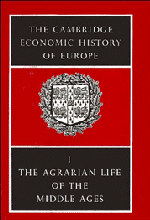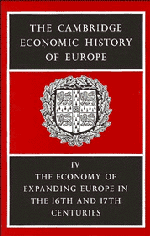8 results in The Cambridge Economic History of Europe
The Cambridge Economic History of Europe from the Decline of the Roman Empire
-
- Published online:
- 28 March 2008
- Print publication:
- 02 January 1963
The Cambridge Economic History of Europe
-
- Published online:
- 28 March 2008
- Print publication:
- 08 September 1977

The Cambridge Economic History of Europe
-
- Published online:
- 28 March 2008
- Print publication:
- 10 August 1978
The Cambridge Economic History of Europe from the Decline of the Roman Empire
-
- Published online:
- 28 March 2008
- Print publication:
- 28 August 1987
The Cambridge Economic History of Europe from the Decline of the Roman Empire
-
- Published online:
- 28 March 2008
- Print publication:
- 15 June 1989

The Cambridge Economic History of Europe from the Decline of the Roman Empire
-
- Published online:
- 28 March 2008
- Print publication:
- 02 January 1966

The Cambridge Economic History of Europe from the Decline of the Roman Empire
-
- Published online:
- 28 March 2008
- Print publication:
- 01 May 1967
The Cambridge Economic History of Europe
-
- Published online:
- 28 March 2008
- Print publication:
- 10 August 1978

